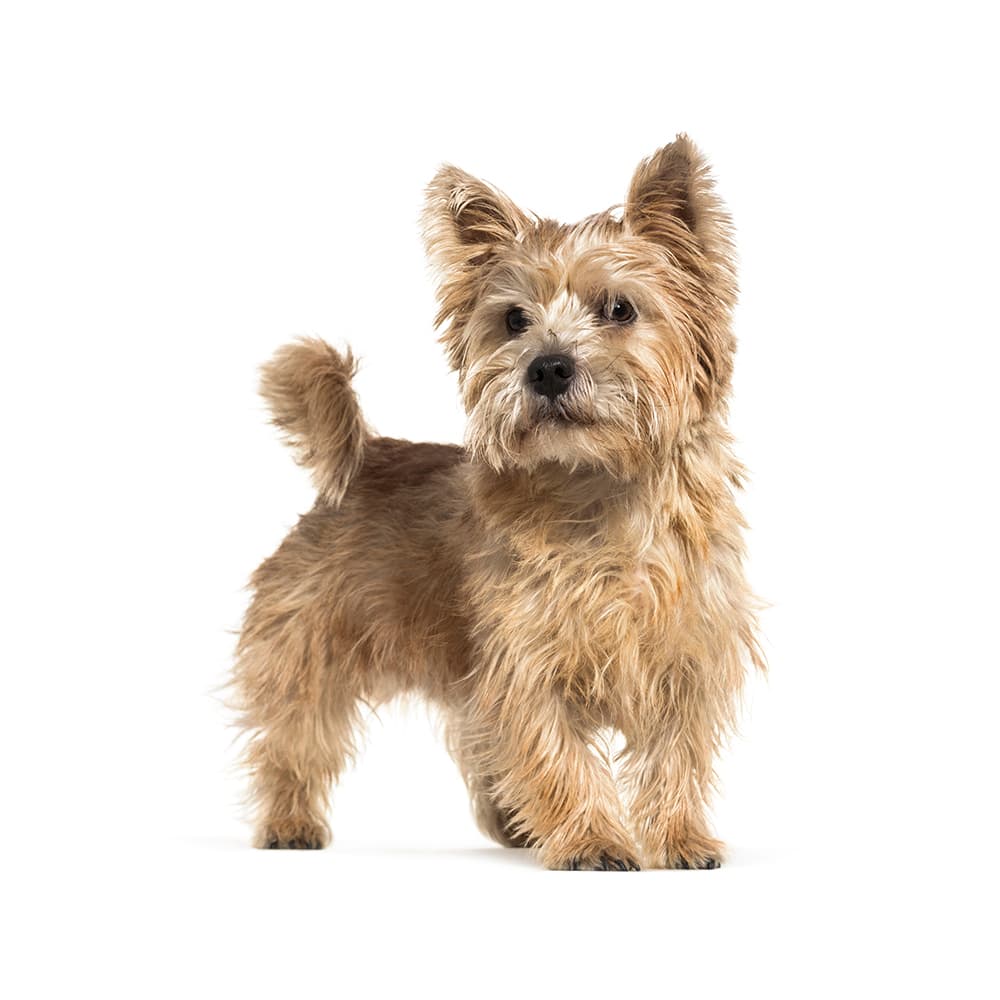Discover your dog's connection to this breed and 200+ others


Discover your dog's connection to this breed and 200+ others



Originating from the United Kingdom, Norwich Terriers were first bred in the late 19th century. They were developed in East Anglia, an area in England for which the city of Norwich was the main hub. These dogs were initially bred for their impressive rodent hunting abilities, making them an asset to stables and farms. They were also used for fox hunting due to their courage and determination. It's interesting to note that the breed was often associated with students at Cambridge University, who kept these terriers as pets and mascots. In the early 20th century, they were known as Trumpington Terriers, named after Trumpington Street where many students resided. Originally, Norwich Terriers and Norfolk Terriers were considered the same breed, known as Norwich Terriers. However, the two were officially separated in 1964 by The Kennel Club (UK), with the main difference being their ears: Norwich Terriers have prick ears, while Norfolk Terriers have drop ears. The American Kennel Club (AKC) followed suit in 1979.
Norwich Terriers are generally healthy, but can be prone to hip dysplasia, degenerative myelopathy, epilepsy, and upper airway syndrome. They may also suffer from patellar luxation, seizures, deafness, cheyletiella mites, allergies, and eye disorders such as primary lens luxation and cataracts. As for all breeds, genetic screening is recommended to assist veterinarians with diagnosis and proactive care, as well as help breeders identify affected and carrier dogs.
Norwich Terriers are known for their energetic, affectionate, and intelligent nature. They are courageous dogs with a strong prey drive, but they are also friendly and adaptable. Their small size makes them suitable for both city living and country life.
Despite their hunting roots, they are generally good with other dogs and animals if properly socialized. Norwich Terriers are good with children, but as with any breed, it's important to teach children how to approach and touch dogs to prevent any mishaps.
Like other terriers, they can be somewhat independent and may exhibit stubbornness, so positive reinforcement training methods work best. They're also quite alert and make good watchdogs, though they're too small to serve as effective guard dogs.
A canine genetic lineage is a group of individuals or entire breeds that descended from common ancestors predating modern breed formation. Often these lineages are associated with a ‘type’ of dog with a unique historical working role and associated behaviors (e.g., herding, scent hunting, etc.).
Terriers were bred to hunt pests like rats, foxes, and badgers. Terriers are tenacious and fearless with high energy levels, strong prey drive, and feisty temperaments which all help in their hunting abilities. Terriers were used as mighty hunters in both urban and rural settings. Terriers have natural hunting instincts and protective tendencies.
Example breeds with ancestry from this lineage include Jack Russell Terrier, Scottish Terrier, and Yorkshire Terrier.
Norwich Terriers are one of the smallest terriers, typically weighing between 10-12 pounds.
Before the breed was officially separated into the Norwich and Norfolk Terrier, they were often called the Cantab Terrier or the Trumpington Terrier. "Jones Terriers" was another nickname, originating from their association with Cambridge University.
Despite their small size, Norwich Terriers are excellent diggers, a trait useful for their original work flushing out rodents.
The Norwich Terrier's likeness was featured on a postage stamp in Kyrgyzstan in 2014.
A Norwich Terrier named "Willum" was a frequent companion of King Edward VII of the United Kingdom.
https://www.akc.org/dog-breeds/norwich-terrier/
https://www.fci.be/en/nomenclature/NORWICH-TERRIER-72.html https://www.ukcdogs.com/norwich-terrier
https://www.petmd.com/dog/breeds/c_dg_norwich_terrier
https://www.pawprintgenetics.com/products/breeds/48/
Recommended by top vets with decades of experience
21 breeds
64 genetic health markers
50 genetic trait markers
